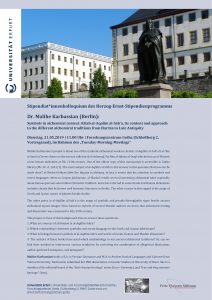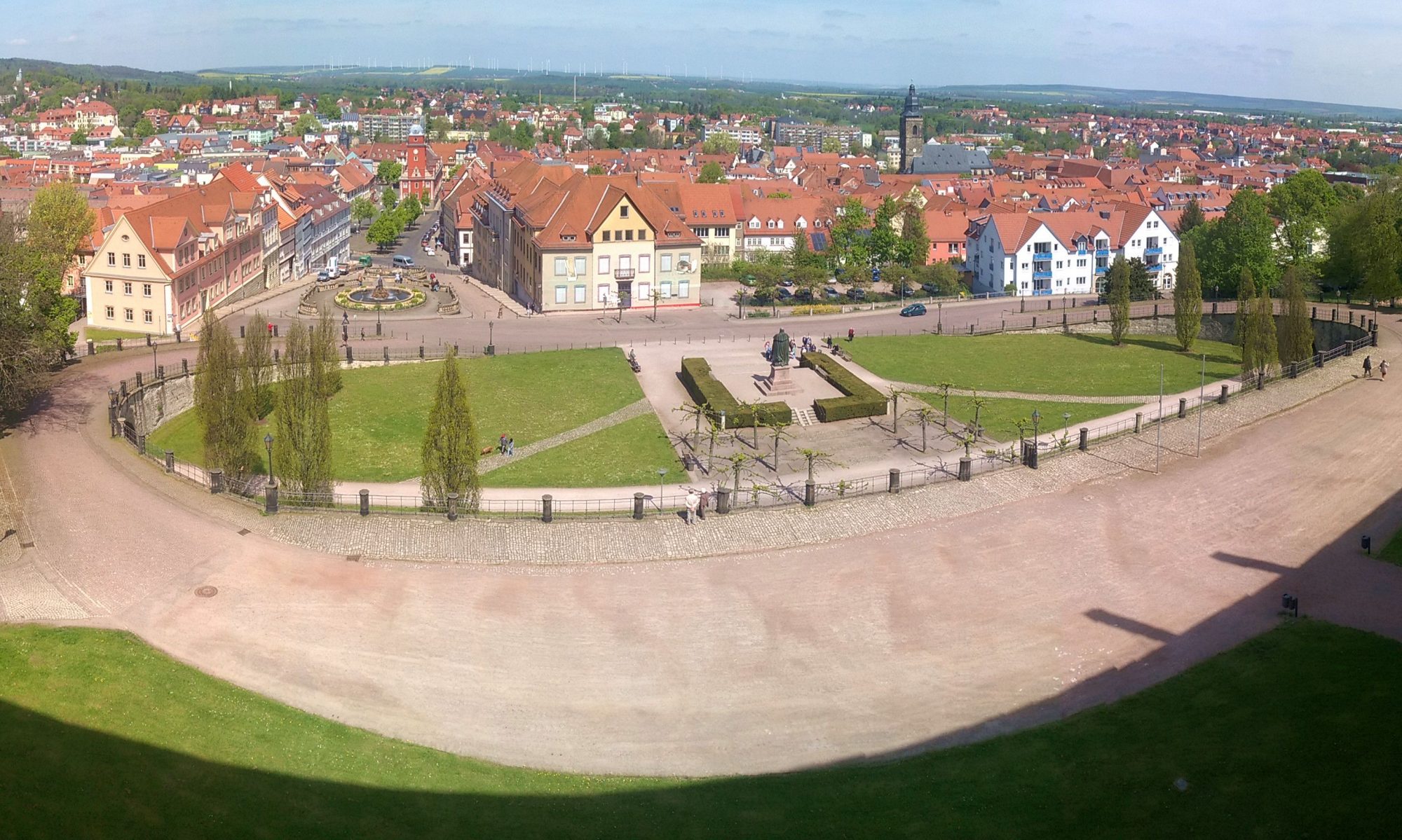Am Dienstag, den 21. Mai um 11:00 Uhr, spricht im Rahmen des „Tuesday Morning Meetings“ Dr. Malihe Karbassian über „Symbols in alchemical context: Kitab al-Aqalim al-Sab’a, its content and approach to the different alchemical traditions from Harran to Late Antiquity“. Alle Interessierten sind herzlich eingeladen.
Abstract
Malihe Karbassian’s project is about one of the symbolic alchemical works in Arabic: al-Aqālīm al-Sabʿa fi al-ʿIlm al-Ṣanāʿa (Seven climes on the science called art [of alchemy]) by Abu al-Qāsim al-Iraqī who known as al-Sīmāwī, a less known alchemist at 7th /13th century. On e of the oldest copy of this manuscript is accessible in Gotha library (Ms. Or. A. 1261/1). The main subject of al-Aqālīm al-Sab͑a is the answer to this question that how can be made elixir? al-Sīmāwī follows Jābir Ibn Ḥayyān in alchemy. In fact, it seems that his attention to symbols and secret languages refers to Corpus Jabirianum. al-Sīmāwī retells several interesting alchemical tales especially about famous persons who follows Hermetic tradition. As he has referred to some Greek and Roman alchemists includes clearly that he knows well hermetic literature in Arabic. The other reason in this regard is his usage of Greek and Syrian names of planets beside Arabic.
e of the oldest copy of this manuscript is accessible in Gotha library (Ms. Or. A. 1261/1). The main subject of al-Aqālīm al-Sab͑a is the answer to this question that how can be made elixir? al-Sīmāwī follows Jābir Ibn Ḥayyān in alchemy. In fact, it seems that his attention to symbols and secret languages refers to Corpus Jabirianum. al-Sīmāwī retells several interesting alchemical tales especially about famous persons who follows Hermetic tradition. As he has referred to some Greek and Roman alchemists includes clearly that he knows well hermetic literature in Arabic. The other reason in this regard is his usage of Greek and Syrian names of planets beside Arabic.
The other point in al-Aqālīm al-Sabʿa is the usage of symbols and pseudo-hieroglyphic signs beside ancient alchemical mystic images. Now, based on reports of several Muslim authors we know that alchemical writing and illustration was remained to 4th/10th century.
This project in base of this background tries to answer these questions:
1. What are sources of al-Sīmāwī in al-Aqālīm-Sabʿa?
2. Which relationship is between symbolic and secret language in this book and Corpus Jabirianum?
3. What is linkage between symbols of al-Aqālīm-Sabʿa and works of Greek, Roman and Muslim alchemists?
4. The authors of these books have used which methodology to mix ancient alchemical traditions? Or, can we find their method to interwoven various traditions by reviewing the combination of allegorical illustration, author-portrait frontispiece, and pictogram?
